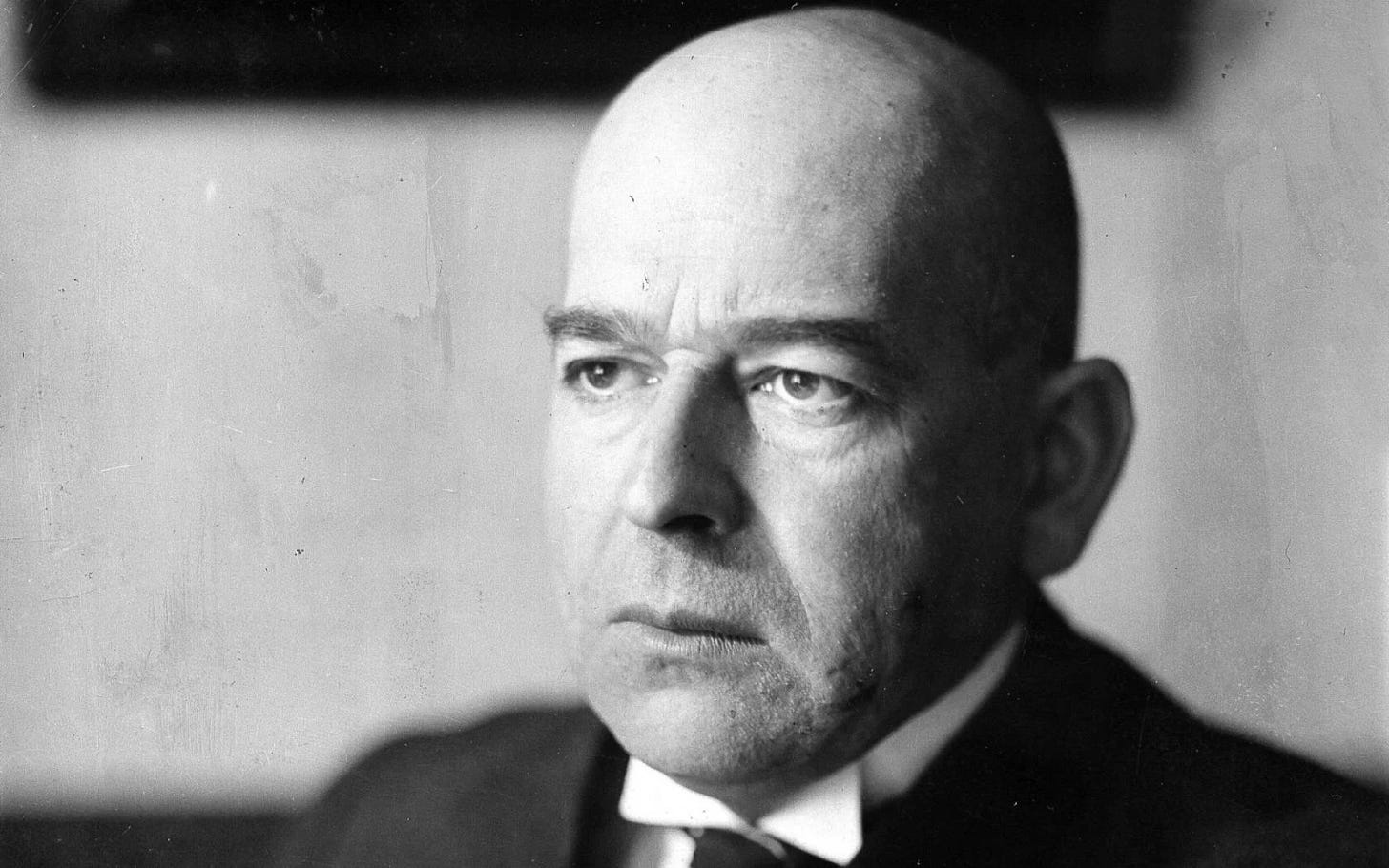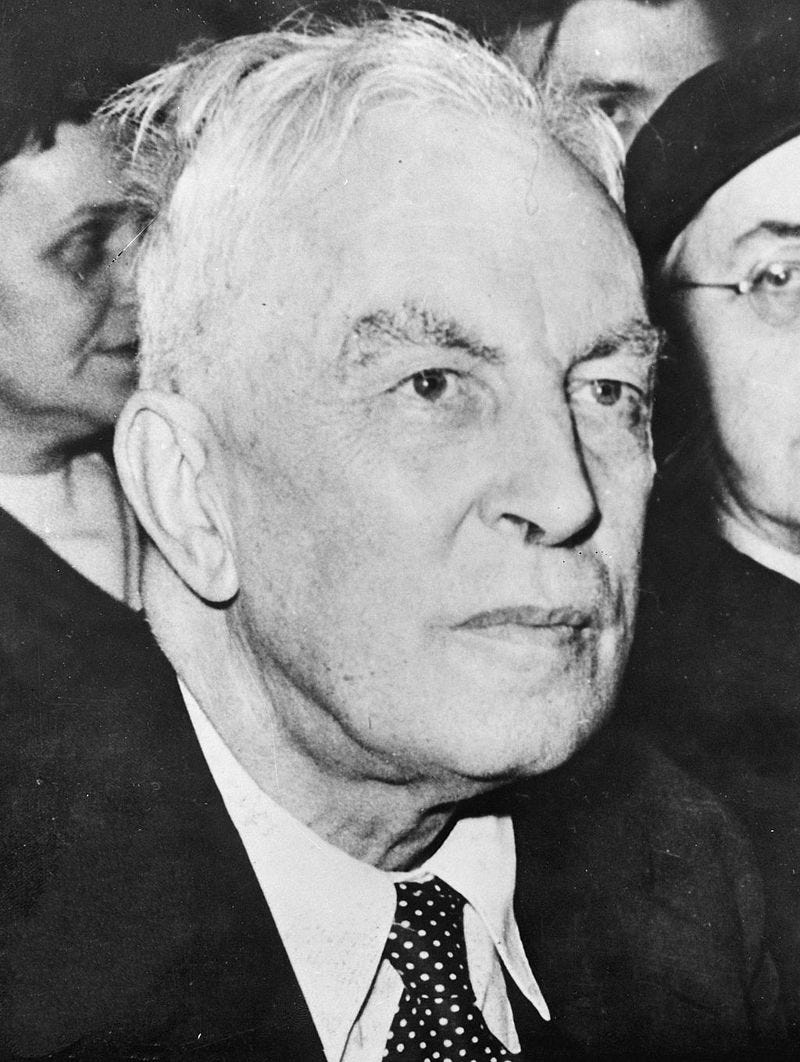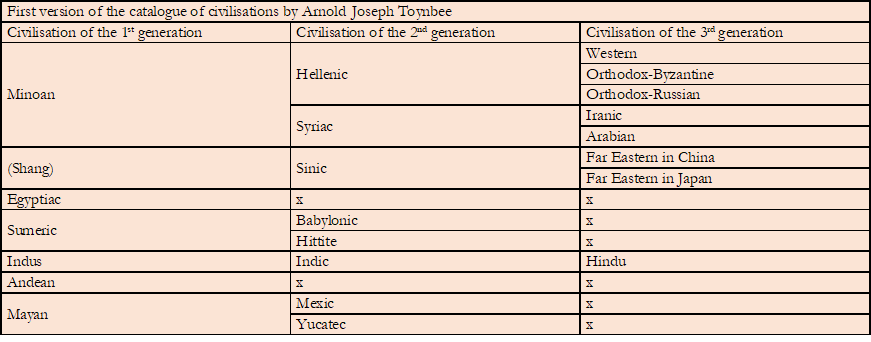In the quest for finding an answer to the question, "How many civilisations are there?" if we are to include not only the present, but also history in all its breadth and depth, we need to look for the boundaries of the beginnings of one civilisation and the end of another in space and time, that is, from a geographical as well as a chronological perspective.
With the geographical perspective, we are often confronted with a question that echoes in many places, namely the following. Are we dealing here with the periphery of a great civilisation, which does not itself shine with its own light, but rather stands in the twilight of the brightness that emanates from the core of that great civilisation? Or is it no longer a distant periphery, but rising to the rank of its own, home-grown, if only satellite civilisation, and the light of civilisation here comes from its own humble source? Does it radiate any real light of its own at all? And can we really designate this neighbourhood of tribal unions and principalities or kingdoms by the pompous name of civilisation? Is there more to it than the aimless whirling or glory-seeking of their chieftains? Or is it only an embryo waiting for the power of a formative principle and the writing of the real story of history?
Oswald Spengler
Taking a chronological perspective opens up the question of continuities and ruptures, connections, chasms and bridges. Do we see here the definitive end of one civilisation and the birth of a new one, or is it merely the alternation of its various moods and stages, and its essence in its depths remains the same? Is it merely a continuation and deepening of an original trajectory that in many other places has been violently severed and cut off, perhaps with less intensity of its own creative impulses?

Spengler focuses his attention on understanding the nature and differences of the three great cultures closest to him geographically and chronologically: the Apollinarian (Classical) civilisation, the Magian (Syro-Iranian) civilisation, and the Faustian (Western, Frankish) civilisation, while giving less attention to the others. For Spengler, Minoan Crete was part of Egyptian civilisation, while the Roman Empire after Constantine becomes part of Magian civilisation. In terms of Spengler's model, there are now Chinese, Indian, Magian, and Faustian civilisations, some outlines of a Mesoamerican civilisation can be seen in Mexico, and he predicts the emergence of a separate Russian civilisation.

Arnold Joseph Toynbee

His footsteps were followed by the English historian Arnold Joseph Toynbee in his magnum opus, a monumental 12-volume synthesis of history with a telling title A Study of History. The breadth and detail of his undertaking in a time prior to the invention of the internet are truly sui generis. He comes up with two catalogues of civilisation. He later revised his first draft (see below) at the end and abridgement of his monumental work with an attention of detail and precision of his own.

His attention did not fail to notice the so-called abortive civilisations, which failed to get a chance to flourish into a full-grown civilisation. Among them, he ranks the following abortive civilisations: the Far Western Christian (understood as the Christian Irish), the Far Eastern Christian ( understood as the Nestorian civilisation along the Silk road), the Scandinavian (Viking), the Mediaeval City-State Cosmos, the Monophysite civilisation of Egypt and the so-called First Syriac Civilisation( prior to the Bronze Age Collapse). With this model, he comes to identify the following civilisations as extand in the present day: Western, Russian, Islamic (which came to be as a merger of the Iranic1 and Arabian civilisations), Far Eastern, Hindu and Indic (consisting of Buddhist South-East Asia, Tibet and Mongolia).
In his final version of the catalogue, he changes perspective and perceives the Hindu and Indic civilisations as being a single one, and acknowledges the continuity of the Sinic and Chinese civilisations too. In this final version, he understands the two Muslim civilisations –Iranic and Arabian- from his earlier draft as part of an integral Islamic whole. The Iranic civilisation in this revised version is understood as the civilisation formed by a common Mazdaic faith of prophet Zoroaster, rather than the society emerging from the synthesis of the islamicised Persians and the Turkic peoples at the edge between the Iranian Plateau and the southern end of the Eurasian Steppe. Furthermore, he acknowledges for the first time the abilities of the inhabitants of Sub-Saharan Africa to transform the potential of the human genius into actuality and become creative protagonists of a civilisation of their own making, emanating its own light under the African sun.

Carroll Quigley

The American historian Carroll Quigley has identified at least 16 civilisations in his Evolution of Civilisations2, where he divides them into three groups according to their primary stable crop, into civilisations of the maize, wheat and rice groups. A refreshing new perspective he offers is the changing of civilisation cycles. He claims that China and India have just recently entered into the beginning phase of a new civilisational cycle.
And that´s it for today. Next week, we are going to look further unto some other scholars who studied civilisations and look at their catalogues of civilisation. If you find it interesting, don´t forget to subscribe to this publication, so that you don´t miss any new posts.
In his first volume he considered to label this Iranic civilisation as Perso-Turkic, according to the languages of its bearers and thus analogically, one may come to label our very own civilisation as latin-teutonic (TOYNBEE, Arnold Joseph: A Study of History, Volume 1 p. 72)





Brilliant work you have been publishing recently! Your account is a perfect introduction to speculative philosophies of history of the 20th century. Though, we should remember, the origins of the field, Herder, Hegel, Kant and the rest of the lot within the late 18th and early 19th century. The scope was not as grand as the speculators of the 20th century you mention in this post. But I think the older forms dive metaphysically deeper into their respective cultures and times.